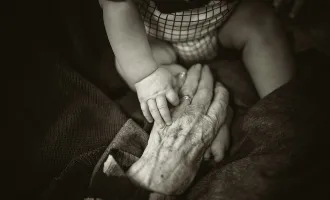UCaSeFiles: Aching Joints: Make Rheum for Treatment
Welcome to UCaSeFiles, a column presenting short case vignettes based on the stories of real patients seen on the wards, followed by a brief discussion of salient learning points. Some cases are rare diagnoses; others are common ailments that might have had a unique or puzzling presentation. All are welcome to submit cases to Theresa Poulos (Theresa.poulos@ucsf.edu) for editing and final submission.
Column Editors: Theresa Poulos, MS4 and Jenny Cohen, MD, R2-UCSF Internal Medicine
Aching Joints: Make Rheum for Treatment
Case Submitted by Theresa Poulos, Staff Writer
The Patient: A 27-year-old male presented to the ED with more than a year of progressive polyarthralgia and a photosensitive rash. He reported joint pain that was worse in the morning and improved with movement throughout the day. His arthritis was most notable in his proximal joints, was present in both upper and lower extremities bilaterally and was so remarkable that he could not make a fist or flex his knees beyond 90 degrees. He also had excoriations on his forearms and shins secondary to a pruritic rash that he noted was worse when he was in the sun. He stated that he would get the same rash on his face unless he wore a brimmed hat. He lived in a rural area and had limited access to primary care; only when his pain got to the point where he was unable to maintain employment and care for his son did he present to the nearest city to seek medical care. On admission, his erythrocyte sedimentation rate, C-reactive protein, rheumatoid factor and anti-cyclic citrullinated protein (anti-CCP) antibody were elevated. HIV, hepatitis B and hepatitis C tests were negative. Anti-nuclear antibody (ANA), creatinine, urinalysis, serum uric acid and creatine kinase were within normal limits.
The Diagnosis: Rheumatoid arthritis is a chronic, progressive, inflammatory condition that often presents with a symmetric polyarthralgia. Other common non-articular manifestations of rheumatoid arthritis include cutaneous disease, osteopenia and vasculitis; a wide variety of rarer systemic manifestations is seen as well. This patient’s presentation was initially perplexing given his photosensitive rash—the team was most suspicious of a diagnosis of systemic lupus erythematosus. We were therefore surprised when his ANA came back negative. With his history, physical exam and lab studies, he did not meet sufficient criteria for the diagnosis of systemic lupus erythematosus based on clinical guidelines. At that point, we began to suspect rheumatoid arthritis (almost two-thirds of rheumatoid arthritis patients have a negative ANA). When his anti-CCP came back elevated, we were confidently able to make a diagnosis of rheumatoid arthritis, as anti-CCP has a specificity of 95-98 percent for rheumatoid arthritis.
This patient’s symptoms had gone untreated for a long period of time, leading to functional loss of joint motility and joint deformity noted on exam. Early recognition and intervention with disease-modifying anti-rheumatic drugs is important in preventing irreversible joint damage. In the inpatient setting, we were able to manage our patient’s pain and treated him with a steroid burst; he was discharged with a plan for close follow-up with a rheumatologist.


